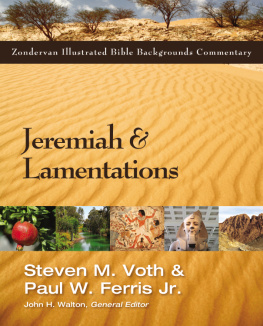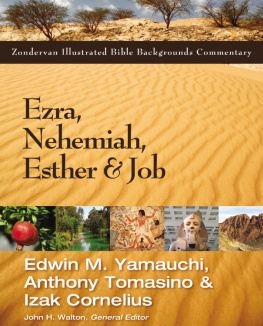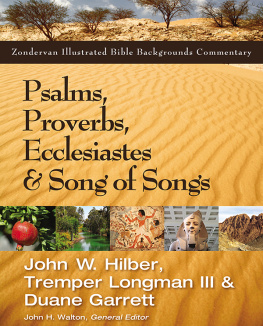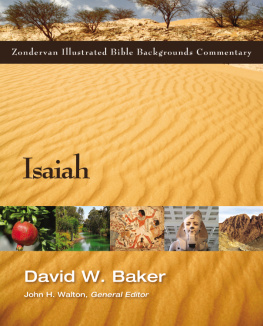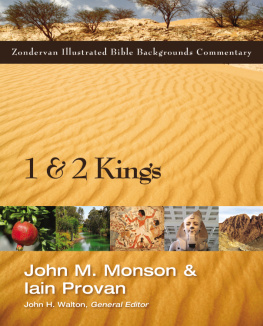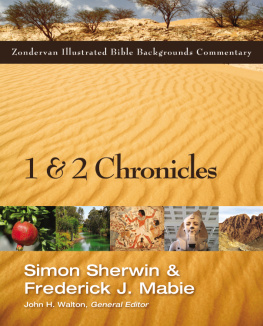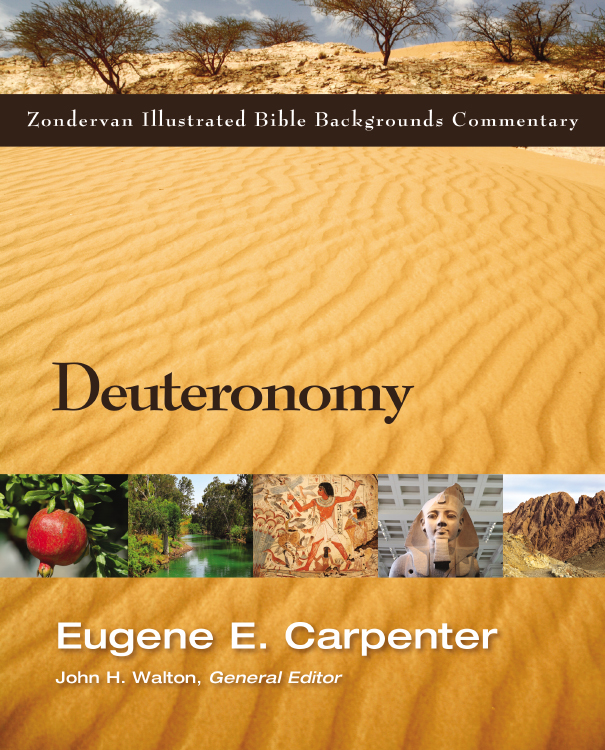Eugene E. Carpenter
What is the difference between an eBook and a print book?
eBook versions contain all the content and supplementary materials found in the original print versions and are optimized for navigation in the various apps and devices used for display. eReaders recognize text as one fluid string and are formatted in a single column, which differs from the multi-column layout seen in many print version books. Therefore, some content may not match the exact appearance of the original print version, but instead uses hyperlinks to navigate between related content.
How do I use the features of this ebook?
*Important Note: Be sure to consult your device manufacturers Users Guide for device-specific navigation instructions.*
The .
The ebook edition for this title contains a special , which contains the full text of the book(s) of the Bible that are the topic of this commentary.
To navigate to specific Bible books, chapters, or verses from the , please note the following:
Book links (Ex. Genesis) go directly to the beginning of that Bible book.
Chapter links go directly to the beginning of the chapter associated with a book.
Use the devices Next Page/Previous Page buttons or functions to scroll through the verses in each chapter.
Every Bible book and chapter hyperlink in the Bible text returns or goes back to the full chapter listing at the beginning of the . Or, use the devices back button or function to go back to the last selection.
Throughout the main text, all Scripture references to the Bible text that appears in the are hyperlinked to the specific chapter or verse referenced. Use the devices back button or function to go back to the last selection.
Footnotes are marked with small, hyperlinked superscript numbers 1.
Select the hyperlinked superscript number in the main text to go to the corresponding footnote.
Select the hyperlinked number to the left of the footnote(s) and you are returned to the main text, or use the devices back button or function to go back to the last selection.
We are grateful for so many who have provided us photographs, some at reduced prices and others free of charge, to help make this work a visual resource on the ancient world. Credits appear by each photograph, but we would especially recognize the following:
Wikimedia Commons makes photographs available through commons.wikimedia.org under a variety of licenses. We have benefited greatly from those that have been released into public domain and have sought out appropriate permission for those that have creative commons licensing (cc-by or cc-by-sa). These photographs are not copyright protected in this set but are available for use under the same terms that we used them.
In connection to Wikimedia, we have used a number of photographs from the Yorck Project, whose images are indicated as being in the public domain, but with compilation protected under the GNU Free Documentation License.
We would like especially to thank Marie-Lan Nguyen, who provided so many photos in public domain on Wikimedia, as well as Rama, who even went and took specific photos that we wanted. Others who provided numerous photographs through Wikimedia include Guillaume Blanchard and Keith Schengili-Roberts.
We are grateful to so many who posted their photographs on Flickr and made them available to us when we requested them. Lenka Peacock, Manfred Nader, and Peter White were particularly generous and gracious as they allowed us to use many of their photographs.
The Schyen Collection supplied many photographs at no charge, and we are grateful to Elizabeth Sorenssen for her capable help.
Edward Loring, Research Fellow and Network Administrator Russian Academy of Sciences Centre for Egyptological Studies, Moscow (CESRAS), Russian Institute of Egyptology in Cairo (RIEC), provided photographs we could not have otherwise gotten.
Photography Suppliers were very helpful in our endless searches for photographs and we would especially like to acknowledge Todd Bolen (www.bibleplaces.com), Zev Radovan (www.biblelandpictures.com), Art Resource (www.artres.com, with thanks to Ann and Jennifer), Werner Forman (www.werner-forman-archive.com, with thanks to Themis), Jim Martin (see photo credits), Jack Hazut (www.israelimage.net), Richard Cleave (Rohr Productions), and Neal Bierling (www.phoenixdatasystems.com).
Thanks also to my colleagues who provided photographs: Fred Mabie, Steven Voth, John Monson, Jim Monson, Rami Arav, Scott Noegel, Aren Maier, Daniel Master, the Leon Levy Foundation, Alan Millard, Stephen Bourke, Constance Gane, and Randall Younker.
We are also grateful to those who supplied photographs from their personal collections: Michael Greenhalgh, Tim Bulkeley (eBibleTools.com/israel), Caryn Reeder, Christina Beblavi, Lisa Jean Winbolt, Brian McMorrow, Kim Walton, David Hall, and the late Maurice Thompson (photographer of the Bible Scene Set), his sons Peter and Andrew, and Geoff Tucker, who scanned the slides for us.




